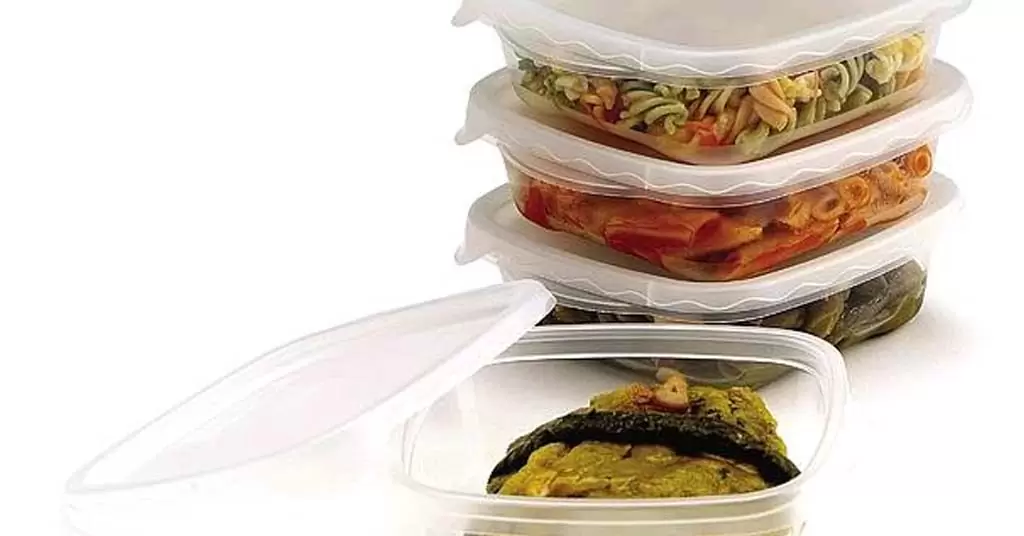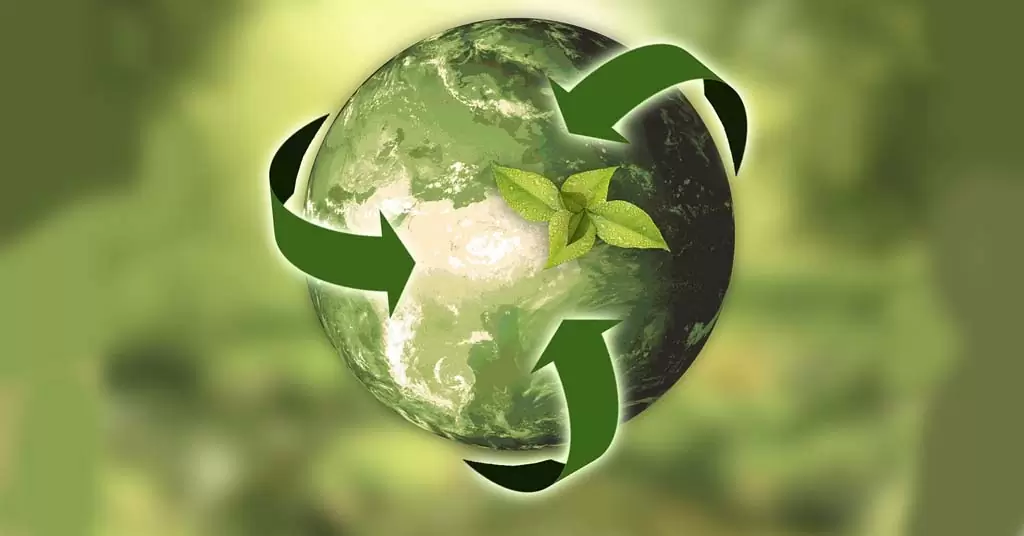If you run a restaurant and want to have more sustainable practices, this article is for you. Below, we will help you to understand the impact of packaging on the environment. This information will allow you to select the most environmentally friendly materials for your daily operations such as take away service and food packaging for sustainabledelivery.
Certainly, opting for the right packaging is a way for your hospitality business to contribute to the care of the planet. It is also a valuable opportunity for you to convey your values of commitment and responsibility to the environment. So sit back, relax, make yourself comfortable and continue to enjoy this article.
Table of Contents
The impact of packaging on the environment – what are we talking about?
To begin with, you should know that all food packaging impacts the environment in one way or another. Whether indirectly or directly, these products influence the state of nature. This can be seen in elements such as natural resources, which end up associated with the production of raw materials.

Also, being used as a source of energy for transporting packaging has a high ecological cost. Food packaging has a wide responsibility for a wide range of environmental problems such as soil and marine pollution. Moreover, the associated greenhouse gas emissions have increased significantly
Environmental concerns and their consequences are mainly focused on how to dispose of these products once they are used. For this reason, it is necessary to become aware of the most sustainable types of packaging for their production. And more importantly, learn the right way to manage the waste derived from these processes to reduce their impact as much as possible.
Types of sustainable packaging that will help you reduce your environmental impact
There are currently several sources of environmentally friendly packaging used in the food industry. Here are the most important ones:
Biodegradable packaging
This type of packaging is made for the purpose of storing your food under strict food safety conditions. Generally, it has a degradation time that varies from a few days to a few months
Biodegradable containers are made from natural materials, plant fibres, plant bark and even naturally occurring polymers. Interestingly, once discarded, they can be used in animal feed, providing a second purpose.
Recyclable packaging
This packaging is made from natural or man-made materials, which once used can be used in the creation of new products. They are sometimes constructed by combining various raw materials such as aluminium, plastic or cardboard.

They are part of a sustainable system that allows them to be used in several cycles without ending up in landfill. It is just a matter of placing them in specially designed containers and then transferring them to recycling centres. And finally, in these spaces, the raw materials are separated to start the production process.
Reusable packaging
This is a sustainable alternative to disposable products, which are usually made of materials of proven resistance. For more environmentally friendly results, it is recommended to use materials such as aluminium, wood or recycled plastic or bamboo.
This is an environmentally friendly option, as these containers allow your customers the possibility to use them for a much longer period of time. In this way, it significantly reduces the solid waste associated with the packaging process in the foodservice sector.
Compostable packaging
There are now other eco-friendly options that have the potential to replace more polluting packaging. This is the case with compostable materials, which have the ability to disintegrate and turn into compost. And although they require human intervention to enhance their results, they are undoubtedly a great alternative to take care of the environment

Certainly, composting benefits agriculture because of its attributes to reduce erosion and desertification. This is possible because of its optimal proportions of organic matter, which helps in the fertilisation of soils to improve crops. For these reasons, if you want to reduce the environmental impact of plastic packaging, this packaging is your solution.
Sustainable materials for packaging, a trend!
Knowing the materials used for the manufacture of ecological packaging will help you make better decisions to minimise the environmental impact. For this reason, here are the ones that will lead you to optimal levels of sustainability:
Sugar cane
Also known as bagasse, it is obtained from the extraction of the sugary liquid that makes up sugar cane. The result is a fibrous product with a high capacity to transport solid and liquid foodstuffs at various temperatures. This is the reason for its widespread popularity in the burger, chip and salad business

It is a material on the rise, and more and more suppliers are recognising its potential in food packaging development. It can be found in a variety of presentations and is well suited to carry your brand image. Undoubtedly, the environmental impact of packaging is significantly reduced with this sustainable alternative.
Kraft paper and cardboard
Kraft paper is made from wood fibres, and is a very versatile, economical and safe material. It comes in various thicknesses, giving the packaging optimum strength to suit various types of food.
According to its composition, you will find this resource identified in wide ranges from 20 to 120 grams. And although its most common and natural colour is brown, it is currently available in other shades. Certainly, it is a material with great benefits for the production of fast food packaging with low environmental impact.
Bamboo
Bamboo is a widely available plant, as it can be found in most countries around the world. It is also considered to be one of the fastest growing trees on the earth’s surface
Its inner fibres are thick, durable and ideal for the manufacture of containers, bags, trays, etc. Moreover, bamboo containers do not require special care compared to other similar items
However, you should be careful as growing these plants requires the use of very large areas. Consequently, you should deal with suppliers who manage their resources responsibly without indiscriminately deforesting forests.
Palm fronds
This raw material is obtained from palm trees through a careful and environmentally friendly process. Specifically, the leaves that fall from the trunk are used to transform them into various types of ecological packaging.

This allows for highly sustainable procedures, as the palm trees are never cut down to collect the raw material. The leaves are then washed with pressurised water and dried naturally in the open air. Once separated into portions, they are pressed at high temperatures to obtain the desired shapes.
Finally, they are cleaned and the unwanted excess is removed to produce ecological packaging suitable for containing foodstuffs. As you can see, palm leaves are used in an environmentally friendly way. And very importantly, their products have a nice presentation that you can use to convey your commitment to the planet.
Corn starch
With this material it is difficult to see how it differs from others in the sector, such as conventional plastics. However, the impact on the environment is drastically reduced because corn starch is obtained directly from nature. This is because they are manufactured using environmentally responsible processes and their products are 100% compostable.
From a technical point of view, corn starch packaging is made from a biopolymer extracted from plants. And they result in a transparent coloured material, with an elegant presentation that competes with traditional packaging. For this reason, they have become a trend for take-away services in the catering trade.
The wide variety of compostable articles made from this raw material does not only include the packaging family. Nowadays it is common to find catalogues full of cutlery, trays, bowls and many others that stand out for their unquestionable quality. And the best thing is that they fulfil their purpose with height at totally competitive costs, which sometimes surpass the other versions.
Pine flakes
This is another sustainable material that represents an interesting option for your hospitality business packaging. Like some of the previous ones, it is fully biodegradable and compostable at a very affordable cost. In addition, it is extracted directly from the wood without requiring additional products such as toxic resins or glues
They are now being used more frequently. This is because with pine flakes you can display your dishes in a creative and elegant way. As a result, you will have a variety of packaging suitable for catering services, oriental food and gastrobars among many others.
Thermoplastic starch or TPS
And we end our list with one of the most demanded materials in the food industry today. This is mainly due to its lower cost and ability to provide biodegradable packaging services
Technically, the selected starch is composed of compounds called amylose and amylopectin, in proportions that depend on the natural source. They are then processed by including plasticising elements to obtain the biopolymer TPS.
Over time, researchers have succeeded in obtaining different types of thermoplastic starch. This has been achieved by combining various polyesters from peas, potatoes and other vegetables with specific properties. As a result, this sustainable material is recognised for its versatile sealing and printing attributes and requires no pre-treatment of its surface.
This brings us to the end of our publication on how to reduce the impact of your packaging on the environment. Remember that selecting the best sustainable materials will help you to define more environmentally friendly practices. Visit our online shop to see our catalogue of sustainable packaging to increase the quality of your services. See you there!



